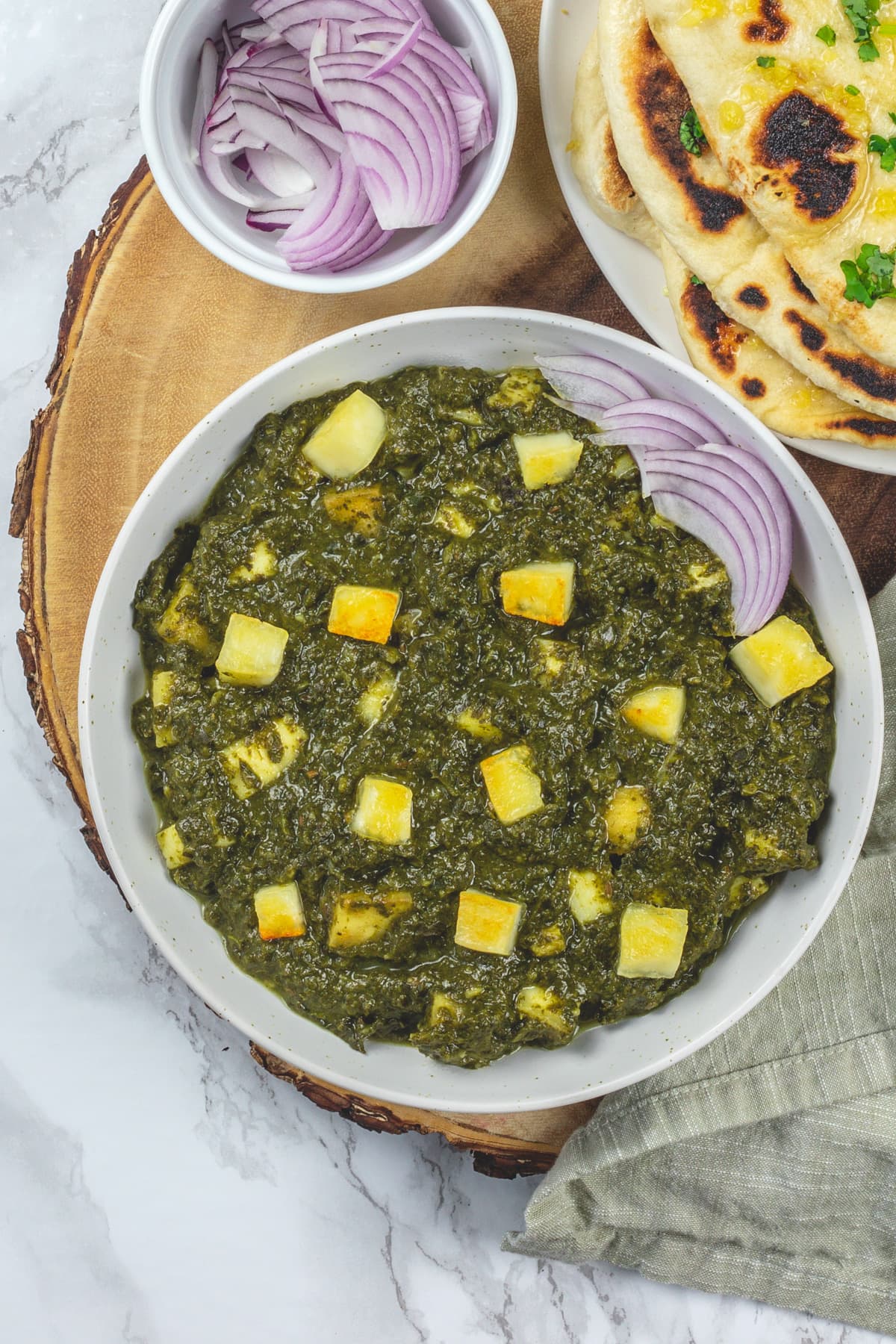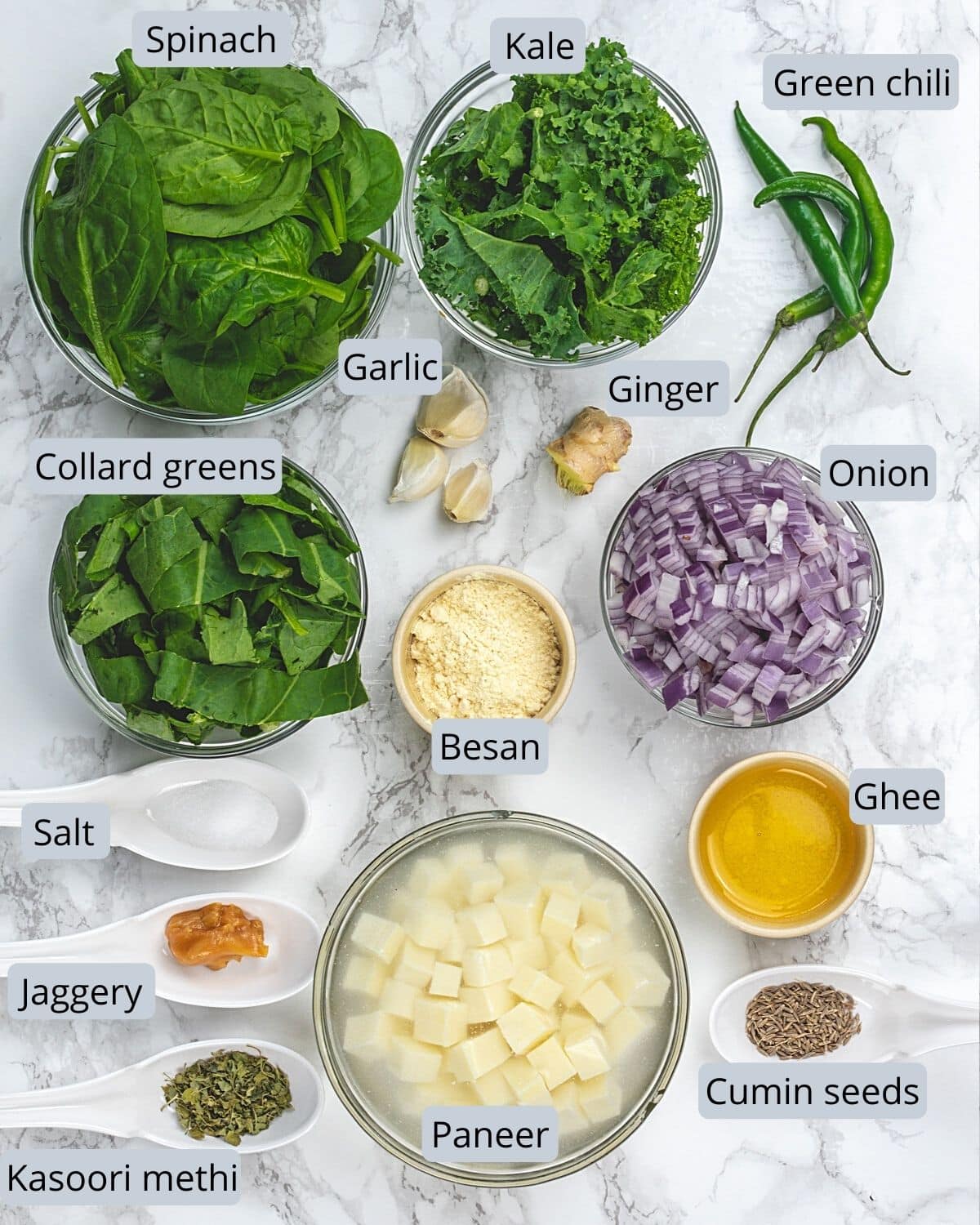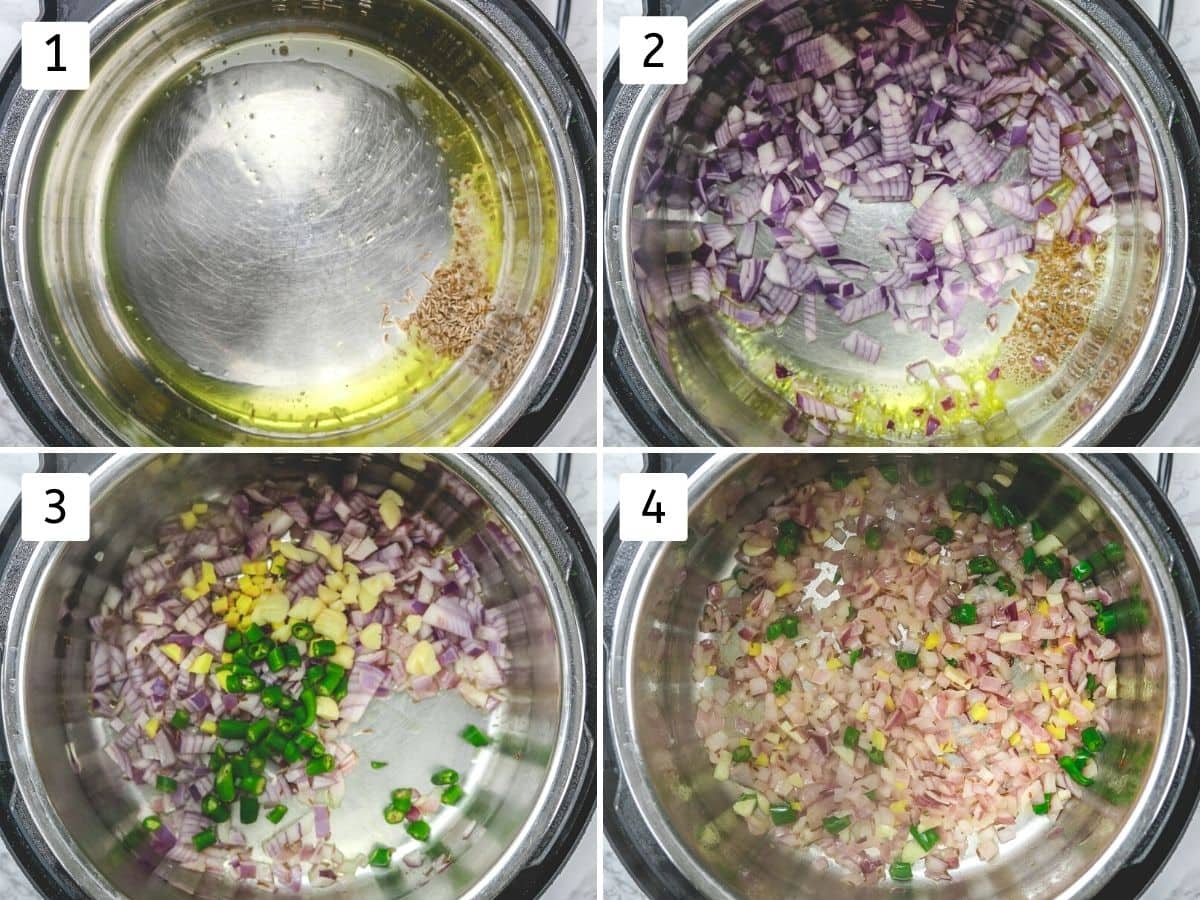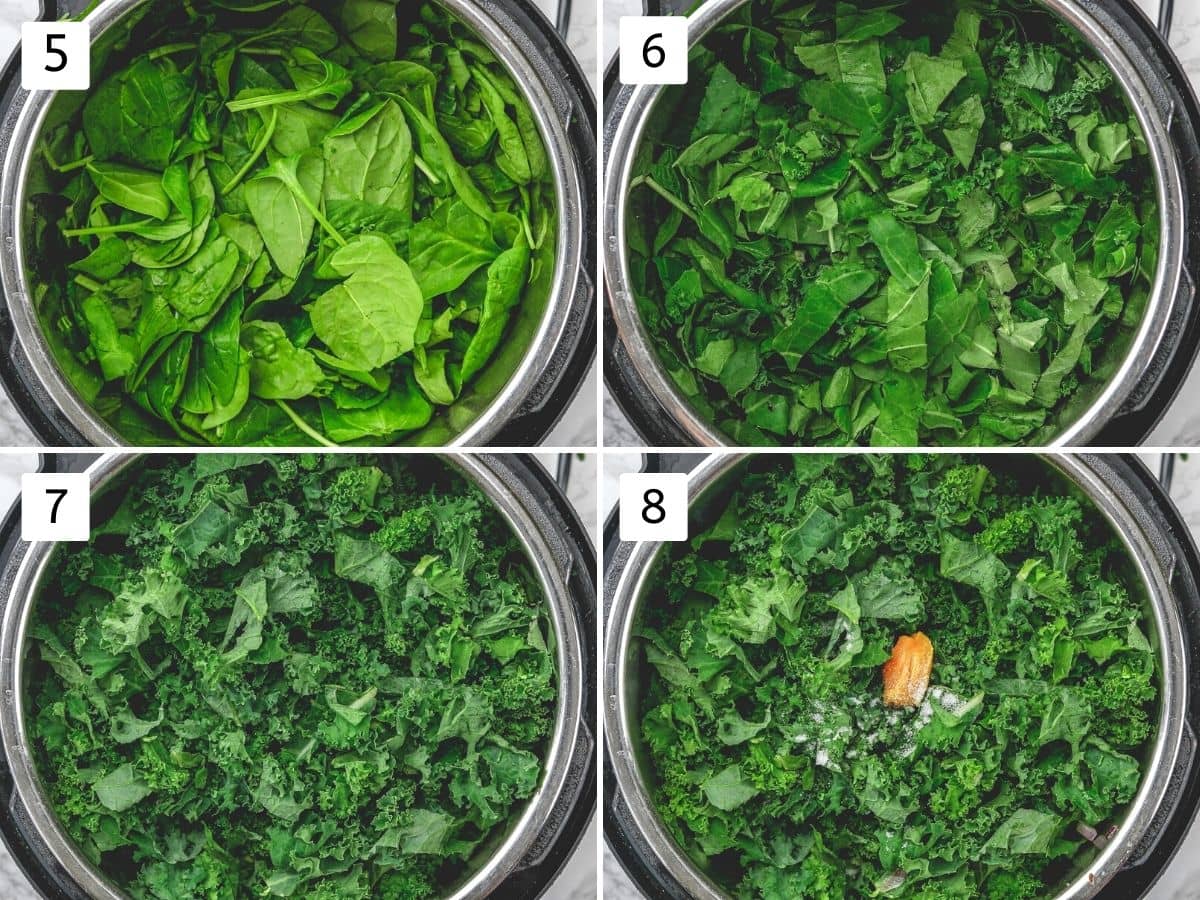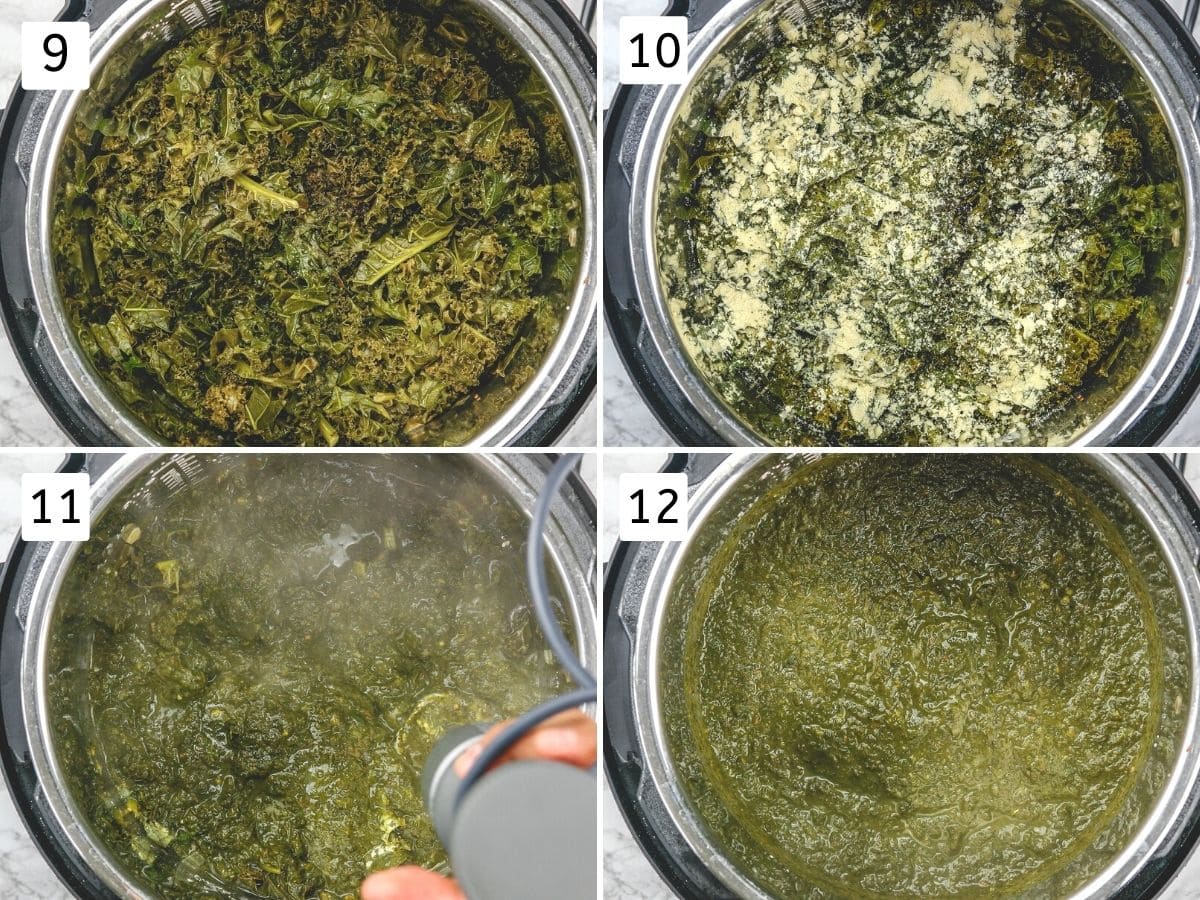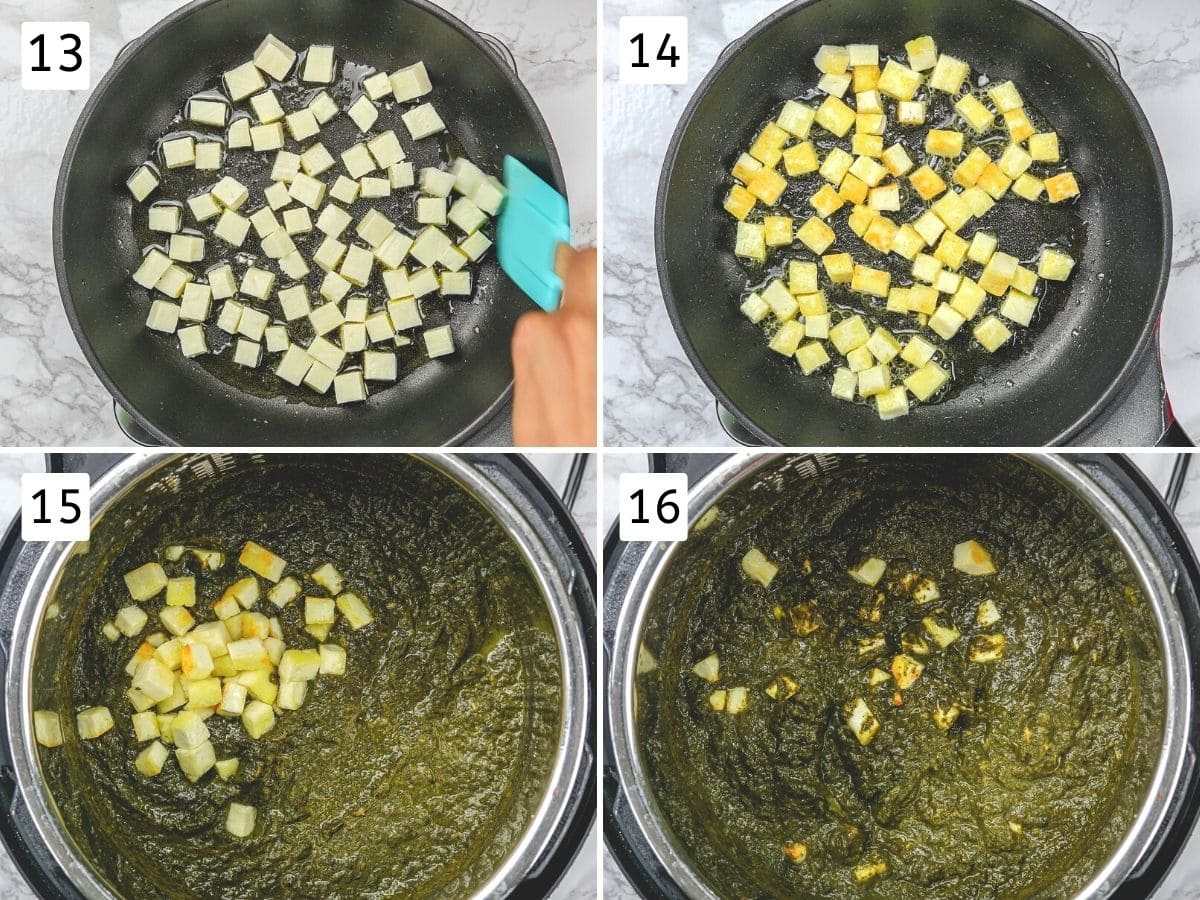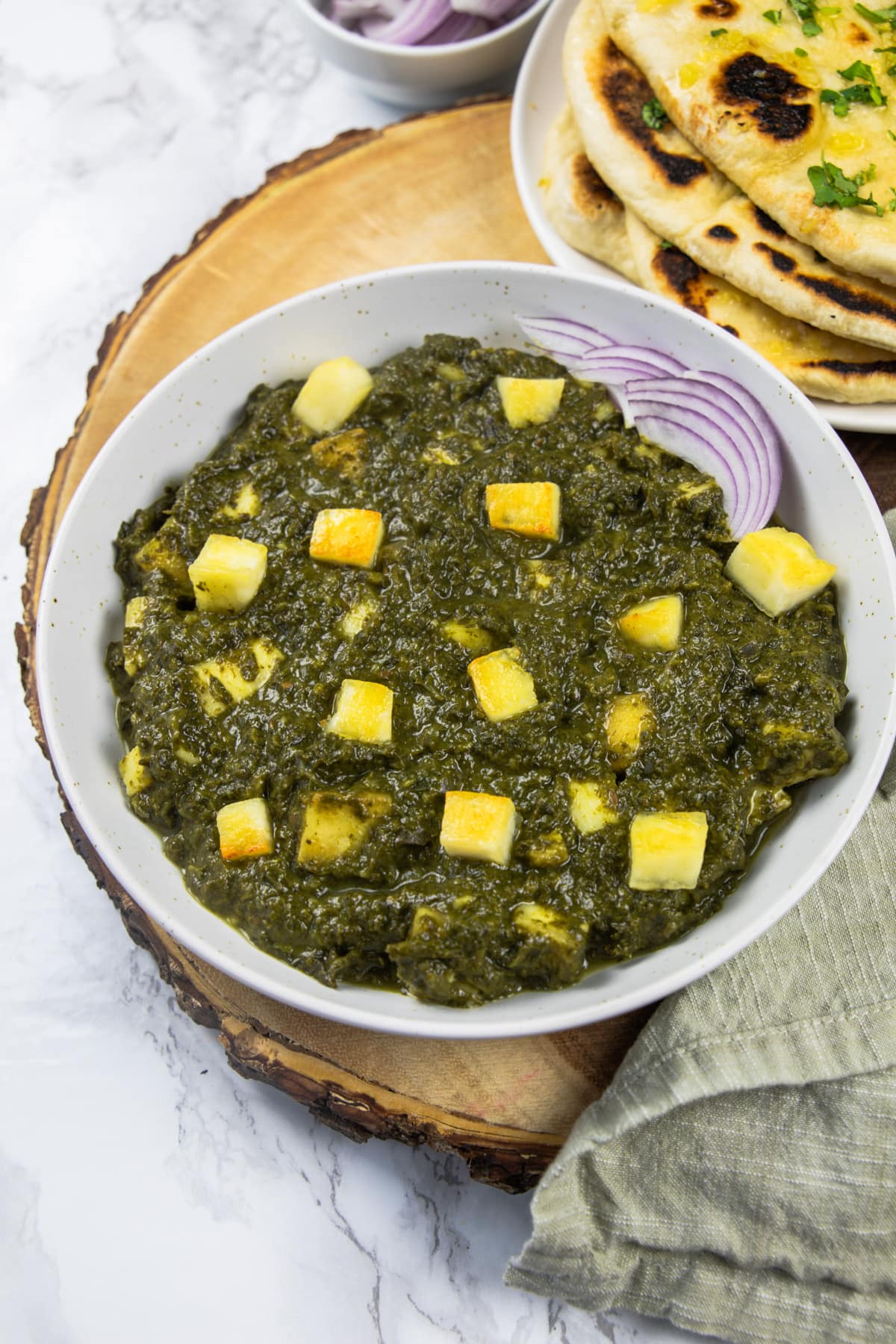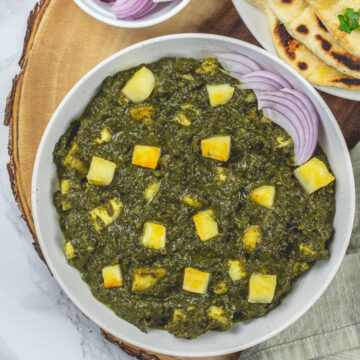This instant pot saag paneer goes well with naan, paratha or plain steamed basmati rice and a side of onion salad (laccha pyaaz) will complete the hearty meal.
❤️ About This Saag Paneer Recipe
Saag is a generic term for leafy greens. So the saag can be made from any combination of leafy greens. Traditionally the mixture of spinach, mustard greens, fenugreek leaves, bathua and mooli greens are used to make saag gravy. The most popular dish is sarson ka saag and served with makki ki roti. But some of the greens are not that easily available here in the USA. So I have used a combination of spinach, collard greens and kale. Trust me, this leafy greens combo makes the BEST tasting saag paneer.
Taste: It has a slightly bitter taste with mild, rich and slightly creamy flavors. Texture: Saag paneer gravy has a coarse, chunky texture unlike other Indian curries (e.g. paneer tikka masala, matar paneer) which have a silky smooth gravy.
Palak Paneer Vs. Saag Paneer
Here in the USA, many Indian restaurants’ menus have saag paneer. But when you order, you’ll get a palak paneer. Actually, these two are not the same. Palak paneer gravy is made from only spinach (plus, onion, ginger, garlic, green chili, etc) Saag paneer gravy (as mentioned above) is made from a mixture of many leafy greens (spinach being the main greens and other bitter-tasting greens are added)
🧾 Ingredient Notes
Leafy greens: Here I have used the mixture of spinach leaves, kale and collard greens. You can use other greens like fenugreek leaves (in a small amount), broccoli rabe (rapini), beet greens, swiss chard, arugula, etc. See the expert tips section for the amount ratio. Green chilies: This is the only ingredient that adds a spicy/hot taste to the saag paneer dish. So add more or less as per your liking spice level. Onion, Ginger, Garlic: add flavor to the gravy. Do not skip any. Ghee: It adds richness to the dish. Plus, ghee makes the dish aromatic and flavorful. Besan (gram flour): It helps to thicken the gravy (meaning avoid the water separating from the gravy). Plus, besan adds some creaminess to the gravy. Jaggery: It balances the slightly bitter flavor of the greens (kale and collard greens). You can use brown sugar instead. Paneer: You can use store-bought or homemade paneer. Keep the paneer cubes in warm water for 30 minutes to make them soft and succulent.
👩🍳 How To Make Saag Paneer In Instant Pot?
- Turn on the instant pot with saute mode and add 2 tablespoons of ghee. Once hot add cumin seeds and let them sizzle a bit.
- Add onion and sprinkle a little salt.
- Add ginger, garlic and green chilies.
- Mix and cook until onions are soft and light pink in color.
- Add spinach.
- Followed by collard greens.
- Also, add kale.
- Add remaining salt, jaggery and water.
- Cover the cook with a lid, keep the valve to a sealing position. Pressure cook on manual for 5 minutes. Let it NPR (naturally pressure release). Once the pin drops, open the lid.
- Sprinkle besan and kasoori methi over cooked greens.
- Using a hand blender, make a coarse gravy.
- You can make it smooth if you prefer smooth gravy. But traditionally the saag gravy is supposed to be coarse.
- Heat the remaining 2 tablespoons ghee in a pan on medium heat. Once hot add paneer cubes.
- Toss them around until they are the light golden color from almost all the sides.
- Add that fried paneer along with the remaining ghee into the prepared gravy.
- Mix well. If needed reheat and bring it to a single boil and serve.
💭 Expert Tips For Saag Paneer Recipe
Do not over-fry the paneer cubes otherwise they get a chewy and rubbery texture. A perfectly fried paneer should have a slight and very light golden color. When they are fried to crisp and brown or dark brown that means they are overcooked. Do not simmer or boil after adding paneer cubes into the saag paneer. If needed just re-heat until it comes to a single boil. Over boiling or simmering makes the paneer cubes chewy and saag gravy may lose its flavor. The gravy texture should be coarse. But you prefer smooth then go ahead.
Substitute guide for other greens:
The base has to be the spinach. You can play around with other greens. One of the greens has to be a bitter-tasting leafy vegetable (like kale, broccoli rabe) If using fenugreek leaves (methi) then use very little amount (around ½ to 1 cup only) as they make the gravy super bitter and strong. 50% of the amount has to be spinach leaves. Other 25% can be any bitter verity (like kale, broccoli rabe, mooli leaves). Rest 25% can be collard greens, beet greens, swiss chard, etc (yes, these have a slightly bitter taste when raw but when they are cooked they will be mild in taste unlike kale)
🥣 Storage Instructions
Leftovers can be stored in the refrigerator for up to 3 days. Saag paneer can be frozen for up to 3 months. I prefer to freeze saag gravy in individual portions. So when needed I can add paneer or other things like potatoes (saag aloo), boiled chickpeas (chana saag), etc. to the gravy.
🍽 What To Serve With Saag Paneer?
To make a hearty meal, serve saag paneer with lachha paratha or garlic naan with a side of sliced onion & lemon wedges (aka Indian onion salad). It can be served with jeera rice or simple plain basmati rice.
Did you try this saag paneer recipe? I’d love to hear about it! Click here to leave a review.
Undhiyu Methi matar malai Mooli paratha Baingan bharta Carrot halwa Chikki Recipe
